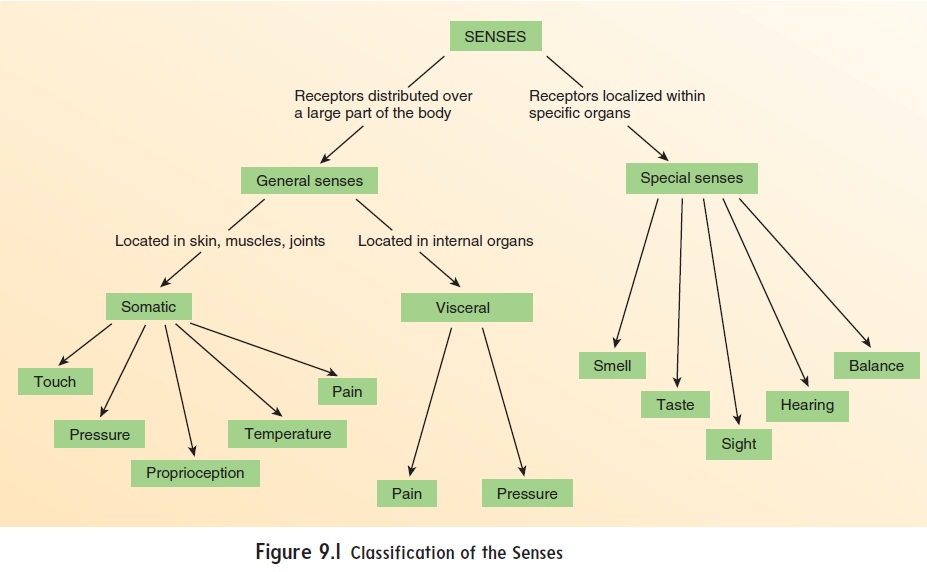Chapter: Essentials of Anatomy and Physiology: Senses
Sensation
SENSATION
Sense is the ability to perceive stimuli. The senses are the meansby which the brain receives information about the environment and the body. Sensation is the process initiated by stimulating sensory receptors and perception is the conscious awareness of those stimuli. The brain constantly receives a wide variety of stimuli from both inside and outside the body, but stimulation of sensory receptors does not immediately result in perception. Sensory receptors respond to stimuli by generating action poten-tials that are propagated to the spinal cord and brain. Perception results when action potentials reach the cerebral cortex. Some other parts of the brain are also involved in perception. For example, the thalamus plays a role in the perception of pain.
Historically, five senses were recognized: smell, taste, sight, hearing, and touch. Today we recognize many more senses and divide them into two basic groups: general and special senses (figure 9.1). The general senses have receptors distributed over a large part of the body. They are divided into two groups: the somatic senses and the visceral senses. The somatic senses provide sensory information about the body and the environment. The visceral senses provide information about various internal organs, primarily involving pain and pressure.

Special senses are more specialized in structure and are local-ized to specific parts of the body. The special senses are smell, taste, sight, hearing, and balance.
Related Topics